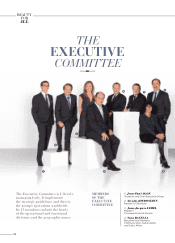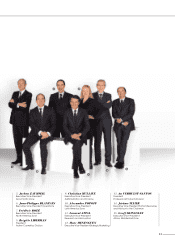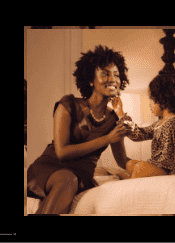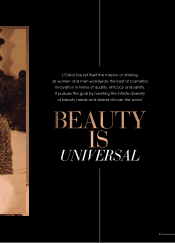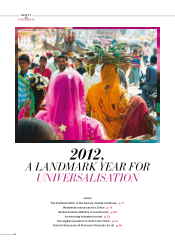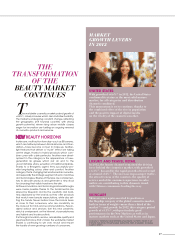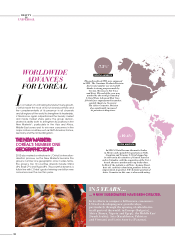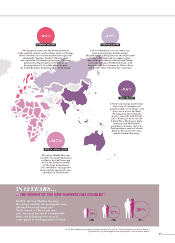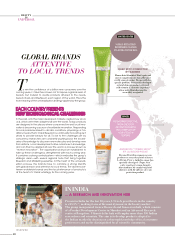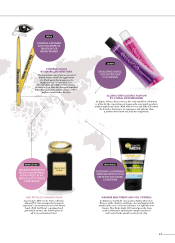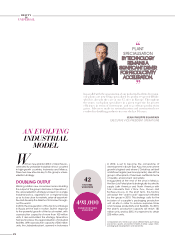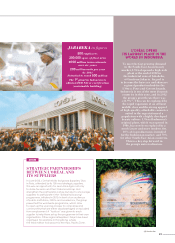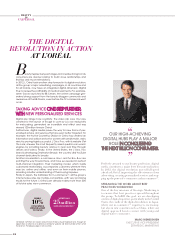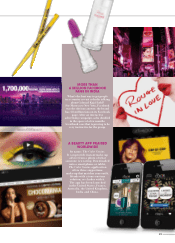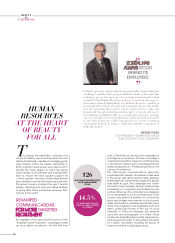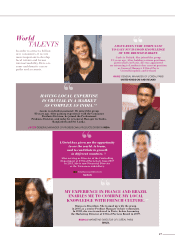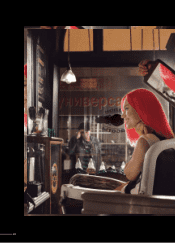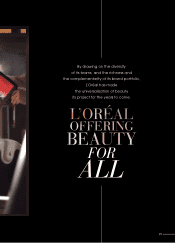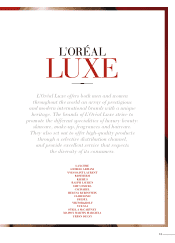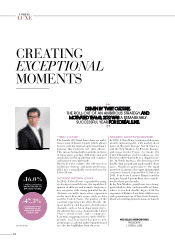Loreal 2012 Annual Report Download - page 24
Download and view the complete annual report
Please find page 24 of the 2012 Loreal annual report below. You can navigate through the pages in the report by either clicking on the pages listed below, or by using the keyword search tool below to find specific information within the annual report.
UNIVERSAL
BEAUTY
IS
In parallel with the organization of our industrial facilities by region,
our plants are now being specialized by product type worldwide,
which is already the case at our 15 sites in Europe. Throughout
the zones, each plant specializes in a given expertise for greater
efficiency in terms of investment, and to accelerate productivity
gains. Advances made in rationalization and automation have
resulted in doubling productivity over the last 10 years.
JEAN-PHILIPPE BLANPAIN
EXECUTIVE VICE-PRESIDENT OPERATIONS
PLANT
SPECIALISATION
BY TECHNOLOGY
REMAINS A
SIGNIFICANT DRIVER
FOR PRODUCTIVITY
ACCELERATION.
AN EVOLVING
INDUSTRIAL
MODEL
With two new plants in 2012, L’Oréal has ac-
celerated its worldwide industrial roll-out. Located
in high-growth countries, Indonesia and Mexico,
these two new sites are key to the group’s univer-
salisation strategy.
DOUBLING OUTPUT
Winning a billion new consumers means doubling
the output of the group’s factories. In Operations(1),
the universalisation strategy is based on a single
industrial policy, organised on a regional basis
so as to stay close to markets, seize all opportuni-
ties and develop the talents of tomorrow through-
out the world.
In 2010, the inauguration of the factory at Kaluga
in Russia set the ball in motion. Built in response
to the powerful growth of the local market, with
a production capacity of more than 100 million
units, it also embodied the strategy Operations
had put in place: the regionalisation of industrial
facilities. With a production capacity of 500 million
units, the Jababeka plant, opened in Indonesia
in 2012, is set to become the cornerstone of
development in South-East Asia, the zone where
growth is highest and where L’Oréal has set itself
ambitious targets (see box opposite). Like all the
group’s other plants, it has been certified in terms
of quality, environment and safety.
Inaugurated at the end of the year in Mexico,
the San Luis Potosi plant is strategically located to
supply Latin America and North America with
hair colourants from L’ORÉAL PARIS, GARNIER and
SOFTSHEEN•CARSON. In the short term, this factory
will adopt the “wall to wall” approach initiated
by the group in 2010. This strategy calls for the
inclusion of a supplier’s packaging production
unit on-site in order to reduce response times
and increase productivity and flexibility. By 2013,
the plant’s production capacity will reach 120
million units, and by 2015, it is expected to attain
225 million units.
42
FACTORIES
WORLDWIDE
498,000
DISTRIBUTION POINTS
WORLDWIDE
(1) Operations at L’Oréal covers seven different fields: purchasing,
production, quality, environment-health & safety, supply chain,
packaging & development, and real estate.
22


